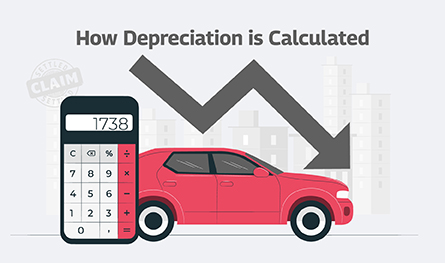What is The Meaning of Absolute Returns in ULIPs?
.png)
All you need to know about absolute returns in ULIPs and what they mean for the financial future of you and your loved ones.
.png)
When doing financial planning for your future, there are two key aspects that every individual is bound to consider. One, meeting the basic essential financial requirements of the family. These may include kids’ education, career investment, marriage, and any other expenses that you may need to make towards a better future for your loved ones. And two, generating enough wealth to secure not just your future (post retirement) but also that of your family (in your absence post death).
Keeping these two concerns in mind, a person looks for a financial plan that serves these two needs well. And when you find a plan that combines both these in a single package, offering the dual benefit of ‘insuring’ your family’s financial future while ‘investing’ for higher wealth later on, you just got lucky! A ULIP or Unit-Linked Insurance Plan offers you just that.
Here we talk a little more about ULIPs and what absolute returns in ULIPs mean for the common investor. If you’re considering buying one of them, this blog would help you make an informed decision.
What is a ULIP Plan?
Let’s begin by understanding what exactly ULIP policy means and how it works. As stated above, ULIP is the common acronym for Unit Linked Insurance Plans. They come with a unique advantage of offering a combined benefit of investment and insurance to the buyer.
This means that upon buying the plan, the policyholder not only gets life insurance protection but is also given the option of making investments in the capital market, such as in debt funds or equity funds (or even both). With such an advantage, a person’s need for both insurance coverage and wealth creation can be satisfied in a single plan.
This is why ULIPs are generally favored as a financial plan product among a number of investors in India. Besides, there is the added benefit of saving taxes by investing in a ULIP insurance plan. Now let’s move on to understanding what is absolute return in ULIP?
What is an absolute return in ULIP – Meaning of Absolute Return in ULIP Investment?
As the name rightly explains, absolute returns imply the total returns or gains made by an investor over a certain time duration. How does one assess that? In financial terms, absolute returns in ULIPs are calculated by determining the difference between the starting value of the investment and its final value, over a specific time period.
Absolute Return Formula and How are ULIP returns calculated?
Here is the simple formula for calculating absolute return in the context of ULIP investments:
Present NAV (Net Asset Value) – Initial NAV ÷ Initial NAV x 100 = Absolute Returns
Also note that the absolute returns from a ULIP investment are expressed in percentage form. Let us understand this calculation better by way of a small example.
Let’s assume that an investor named Sanjay bought a ULIP plan and invested Rs. 20,000 in it. After 5 years, the investment increased to a total amount of Rs. 30,000. Now to calculate the absolute returns gained from this particular investment, we would follow the formula explained above and arrive at the amount.
Absolute Returns = (30,000 – 20,000 ÷ 20,000) x 100 = 50%
Hence, the absolute returns from this specific investment is calculated to be 50%. In other words, Sanjay’s investment grew by 50% in 5 years.
Benefits of ULIPs – 5 Reasons to Invest in Unit-Linked Insurance Plans (ULIPs)
We learned in the above section on how to determine the absolute return on your investment made in a ULIP plan. If you’re still unsure about choosing ULIPs for financial investment and wealth creation, take a look at some of its benefits below:
- Investment with financial protection: Most financial investment products in the market focus solely on generating wealth for the investor. However, ULIPs are the only policies that offer the dual benefit of financial investment with lifelong insurance protection.
- Flexible investment choices: Another benefit of investing your money in a ULIP plan is that it allows you to choose where you’d like to put your investment. You can choose between debt or equity funds, or even choose to invest in both. Your decision is solely based on how the market moves.
- Flexible returns too: Since the ULIP plan is linked to the capital market, the returns on the investment are also directly related to the movement in the market. If the market is doing well, you’re likely to earn higher returns, and vice versa.
- Financial protection to your family in your absence: The whole purpose of future investment is to secure your future and that of your loved ones. In case of your untimely and unfortunate demise, ULIPs would ensure that your family and dependents are not left helpless. The return earned from the ULIP plan would help meet all the financial goals of your family in your absence.
- Tax benefits to the policyholder: Since ULIPs involve partial investment in life insurance, the premium amount payable towards maintaining the insurance aspect of the plan enjoys tax exemptions. As per Sections 80C and 10(10D) of the Income Tax Act, 1961, ULIP policyholders are entitled to enjoy tax benefits on the premium paid toward the plan.

Author Bio
Paybima Team
Paybima is an Indian insurance aggregator on a mission to make insurance simple for people. Paybima is the Digital arm of the already established and trusted Mahindra Insurance Brokers Ltd., a reputed name in the insurance broking industry with 17 years of experience. Paybima promises you the easy-to-access online platform to buy insurance policies, and also extend their unrelented assistance with all your policy related queries and services.
Other Life Insurance Products
Latest Post
So, you’ve crossed the fabulous 60 mark. Retirement may be on the cards, your kids might be off doing their own thing, and suddenly your knees are making more noise than your WhatsApp notifications. Welcome to the senior citizen club.
Now let’s talk about something most of us tend to postpone until a doctor gives us a reality check: health insurance. If you are wondering whether buying health insurance after 60 makes sense, the answer is a loud and clear yes. This article will cover everything you need to know about it, how it makes sense, how it differs from health insurance for young adults, and what you need to look out for when checking for medical insurance above the age of 60.

.png)
April 2 is observed as World Autism Awareness Day and there is no better way to observe the day than to raise awareness of this condition and to promote kindness towards autistic people. Read on to know more.


Car depreciation implies the difference between the cost of a car at the time of buying the car and when you sell it. A car insurance claim amount is determined by the car depreciation rate. The car depreciation rate is the reduction in the value of your car over its lifespan caused by wear and tear.


Fixed Deposits (FDs) are one of the safest ways to grow your savings. HDFC Bank offers attractive FD interest rates, allowing you to earn guaranteed returns on your investment. But before you invest, it's important to know how much interest you will earn and what your final maturity amount will be.


If you think of life insurance, chances are you are picturing something people buy in their 30s or 40s. But what if you are 65 or older and just getting started? The good news is that you are never too late. Whether you are thinking of easing the financial burden on your family, covering final expenses, or simply leaving behind a legacy, there are life insurance options tailored just for you.
This article will be a guide to life insurance for senior citizens above 65 years, explaining why it is important, the type of insurance options, and how to get the right policy for you.




